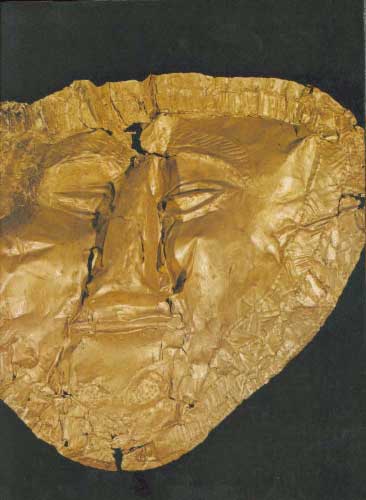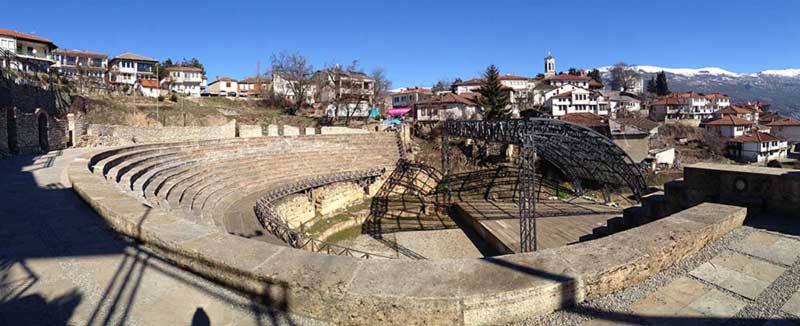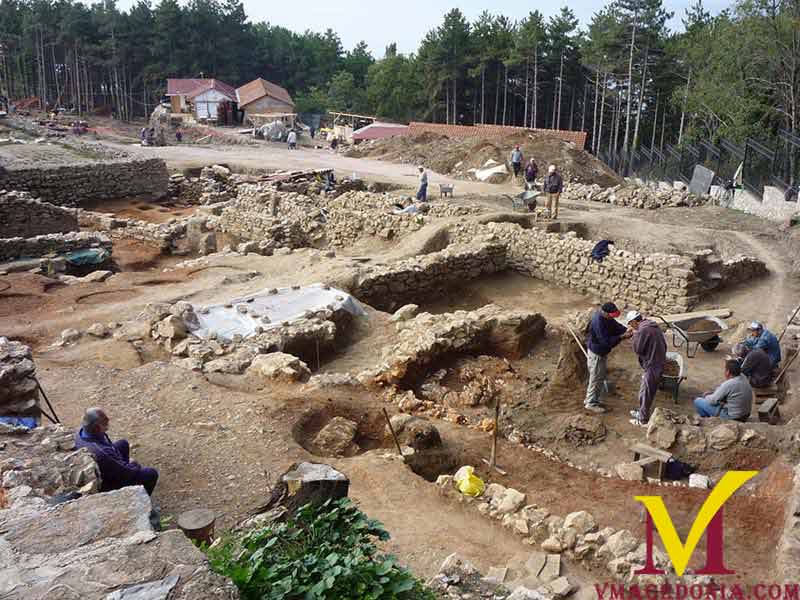Table of Contents
Neolithic and eneolithic period
In the Ohrid region there are several Neolithic settlements: Dolno Trnovo in Ohrid and Zlastrana in the village of Gorno Sredorece (Debarca), as well as the Kutlina site in the village of Velmej (Debarca) that dates back to the Eneolithic period. There are also several sites from the Bronze Age: Lakoceresko Gradiste, Koselsko Gradiste, Tumba near the village of Svinista, and the recently discovered lake-dwelling settlement “Ploca Micov Grad” located near Gradiste peninsula on the eastern shore of Lake Ohrid.
Excavations carried out in the three Neolithic settlements have shown the presence of the remains of buildings, graves and ceramics. On the surface of the sites Lakocersko Gradiste and Koselsko Gradiste fragments of ceramic pots as well as stone and bone tools were found.
The Neolithic sites now known in the Ohrid region date back from IV – III millennium BC
The Iron Age
Excavations carried out near the village of Gorenci, around 9 km from Ohrid (Suva Cesma, Tri Celusti and Vrtulka), have shown the presence of certain material indicating that the site dated back from the late period of the Iron Age II. Going back chronologically through the Iron Age in Macedonia, new cultural developments can be traced back to the VI and V century BC This period is marked as the Iron Age III, or the period of formation of the Macedonian archaic style manifested by the “principal’s crypts”. These tombs were discovered in the necropolis “Trebenista” near village Gorenci. Another necropolis from the same period was discovered near the village Recica, northern of Ohrid.
In the archaeological excavations that started in 1918 and were carried out with interruptions until 1972 a total of 56 burial structures were discovered. The majority of them contained wealthy funeral artifacts.
During the VI century BC formation and presence of certain ethnic groups in the Balkans was already evident. In the Ohrid region, the Enhelians were mentioned. The most significant findings are the golden funeral masks contained in the rich “principal” crypts in Gorenci. The masks were made out of golden tin and they are subjects of a series of observations in the scientific world. According to some scientists, the characteristics of their style, i.e. the encrusted ornamental patterns, are characteristic for the Greek art from VI century BC Others claim that these patterns can be related only to the Macedonian art.
Today the precious findings of the necropolis “Trebenista” beautify the exhibition stands of the museums in Sofia – Bulgaria and Belgrade – FR Yugoslavia.
Classical period
From the time of Philip II of Macedonia entering in the region of Lychnidos, the cultural influences of the Greek-Macedonian world were more present. This notable culture left its mark in this territory and various artifacts have been found: from marble molds, through ceramic and bronze pots, to small pieces of jewelry made of gold, semiprecious gems and glass paste.
Recent archaeological examinations have shown that the line starting from St. Erasmus through Gabavci, Paterica and Kozluk to Koselska Reka was an urban entity. This entity in archaeology is known as “Hermeleia”. The acropolis is located high in the hill of Gabavsko. Its southeast footage is the lower town, and the sacred and secular buildings are located on the eastern and western sides.
Two necropolises from ancient times were discovered near Ohrid. One of them is located in Trebenisko Kale, and the other was discovered on the site Crvenica near Prentov Most. On the ruins of the former a stronghold was found built in several different periods, as well as ceramic pots and 17 grave units. On the site near Crvenica, 143 tombs dating back to the Hellenic period and the early Middle Ages were found.
Also one Macedonian crypt was found in the area of Varosh, the old part of Ohrid. On the locality Deboj, the central necropolis of Lychnidos and the medieval Ohrid were discovered.
There is another building that is usual for this period – the Roman theater. It is located in Varos (the old part of Ohrid). It was built in accordance with the Greek and Roman type of theaters. The first findings of this monumental structure, without which a town center in the classical period would have been inconceivable, date from the beginning of the 20th century, with two relief plates depicting Dionysus with the Muses. The first archaeological probes were carried out during 1959 – 1960, when nine rows of seats in the theater were discovered. Some of the stone seats contain inscriptions of the names of the families that had subscriptions.
The theater covers an area of around 4,000 m2. In the excavations carried out in three occasions, the locations of the entrances, theater building, orchestra with seats reserved for honorable people as well as the arena volume were defined.
In this period in the region of Lychnidos the presence of religion was rather significant. One notable sculpture found in the region of Lychnidos is the goddess of human destiny, Isis.
Many towns of that period, with the consent of the Macedonian rulers, used the mines and minted coins with the common inscription of MAKEDONWN and the name of the region. Only in the case of Ohrid, the name of the town was also imprinted.
Early Christian period
A polyconched church from this period was discovered in the Lychnidos region. It is located north from the Monastery of St. Clement’s compound. Its monumentality, architecture and splendid mosaics distinct it from all discovered Early Christian basilicas in the region of Ohrid. It is unknown to whom it was devoted.
This polyconched structure was reconstructed several times. It was built in a form of double shell typical for the early Christian architecture. A similar church was excavated in the yard of Hadrian’s Library in Athens, Greece. Such structures were characteristic for the early Justinian period. It is possible that the shrine was the cathedral of the Lychnidos bishops.
The basilica “Studencista” is located outside the boundaries of the classical and medieval town, on the eastern slopes of Mount Petrinska. Analysis indicate that the shrine dates from the end of V and the beginning of VI century AD
Similar structures were found in the old part of the town. There are even some indications that the church of St. Sofia was erected on the foundations of an early Christian church, because some traces of an older architecture were found. The discovery of an early Christian basilica, located in the immediate vicinity of the medieval church devoted to St. Erasmus, was also important. St. Erasmus was the first preacher of the Christian belief in this region. Apart from these, basilicas were discovered southeast from the Classical theater and eastwards from the Church of St. Bogorodica Perivlepta (St. Clement).

Virtual Macedonia
Republic of Macedonia Home Page
Here at Virtual Macedonia, we love everything about our country, Republic of Macedonia. We focus on topics relating to travel to Macedonia, Macedonian history, Macedonian Language, Macedonian Culture. Our goal is to help people learn more about the "Jewel of the Balkans- Macedonia" - See more at our About Us page.
Leave a comment || Signup for email || Facebook |
History || Culture || Travel || Politics



















